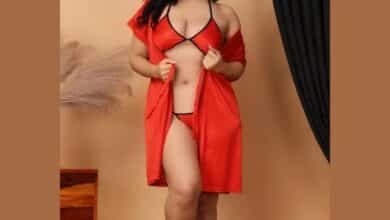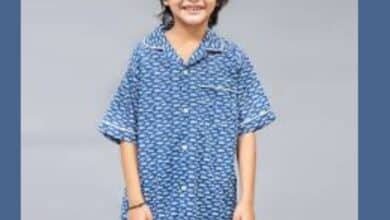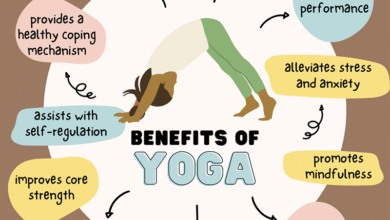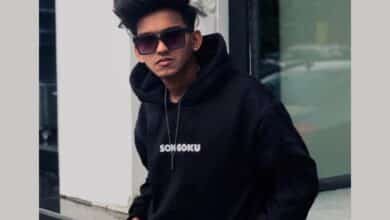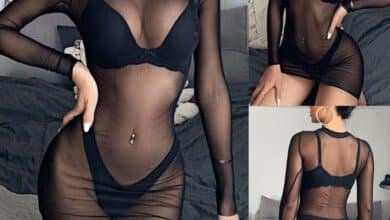Traditional Dress of Gujarat | A Deep Dive into Regional Fashion
Traditional Dress of Gujarat
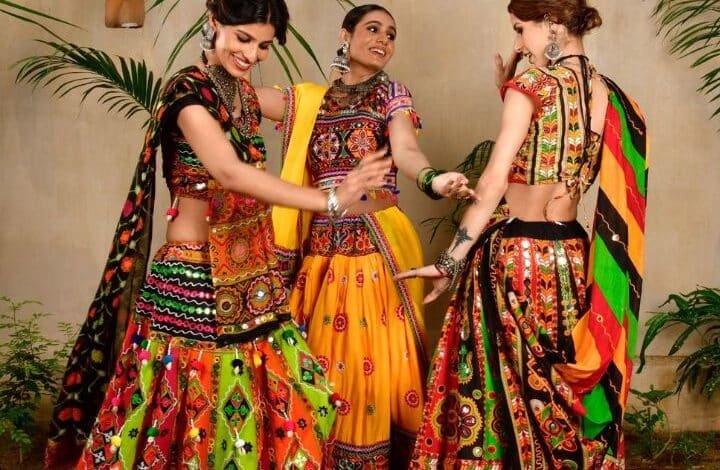
Gujarat, a state located on the western coast of India, is known for its rich cultural heritage, vibrant festivals, and distinct traditions. Among these cultural elements, the traditional dress of Gujarat stands out for its vivid colors, intricate designs, and historical significance. The traditional attire of Gujarat reflects the region’s history, social norms, and religious influences, offering a beautiful glimpse into its diverse culture.
This article will explore the various aspects of the traditional dress of Gujarat, from the attire worn by men and women to the influence of different communities and the modern-day variations of these garments.
Table Of Contents
- Importance of Traditional Dress Of Gujarat Culture
- Traditional Dress for Women Of Gujarat
- Traditional Dress for Men Of Gujarat
- Influences on the Traditional Dress of Gujarat
- Table: Common Traditional Dress of Gujarat
- Final Thought Of Traditional Dress of Gujarat
Importance of Traditional Dress Of Gujarat Culture
The traditional dress of Gujarat plays a crucial role in the cultural identity of the state. These garments are not only a form of clothing but also symbols of Gujarat’s history, values, and artistic expressions. The traditional attire often varies based on region, occasion, and community, showcasing the diverse ethnic groups that call Gujarat home.
The traditional dress of Gujarat also holds immense cultural value during festivals and celebrations, such as Navratri, Diwali, and weddings, where the community comes together to celebrate with dance, music, and traditional rituals. During these festivals, the vibrancy of the dress is matched by the lively spirit of the people.
Traditional Dress for Women Of Gujarat
The traditional dress of Gujarat for women is renowned for its colorful, elegant, and intricate designs. Various garments are worn depending on the occasion, with each outfit representing a specific cultural tradition or community.
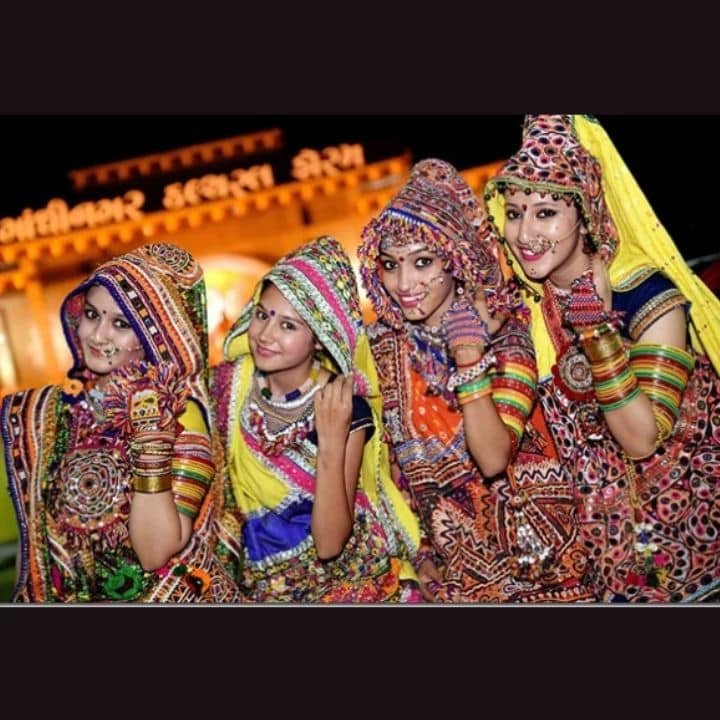
Ghagra Choli (Lehenga Choli)
One of the most iconic and widely recognized pieces of clothing in the traditional dress of Gujarat for women is the ghagra choli, also known as lehenga choli. This outfit consists of a long, flowing skirt (ghagra), a fitted blouse (choli), and a dupatta (scarf) that is often draped around the shoulders.
- Ghagra: The ghagra is typically made of colorful, lightweight fabrics such as cotton or silk. It features intricate embroidery, mirror work, and beadwork, making it a popular choice during festivals and weddings.
- Choli: The choli is a short, fitted blouse with various designs, ranging from sleeveless to full-sleeve. The choli often complements the ghagra in terms of color and embroidery.
- Dupatta: The dupatta is a long piece of cloth draped around the shoulder or head. It completes the outfit and adds a touch of elegance to the ensemble.
This attire is especially popular during Gujarat’s vibrant Navratri festival, where women participate in the traditional Garba dance. The colorful ghagras paired with cholis add to the energy of the dance, creating a lively and festive atmosphere.
Saree
The traditional dresses of Gujarat for women also includes the saree, one of the oldest and most traditional forms of attire in India. Gujarati sarees are distinct in their designs, with the most notable style being the Patola saree.
- Patola Saree: Known for its double ikat technique, the Patola saree is made using a unique method of tie-dyeing that gives the fabric vibrant patterns and colors.
The Patola saree is a timeless symbol of Gujarat’s textile industry and is often worn during weddings and festivals.
Kediyu
The kediyu is another traditional outfit worn by women, especially in rural areas of Gujarat. It consists of a long, flowing tunic-like top with puffed sleeves and a matching skirt. This attire reflects the simplicity and comfort required for daily chores and work.
Traditional Dress for Men Of Gujarat
The traditional dress of Gujarat for men is equally diverse and reflects the state’s cultural heritage and regional influences. Men in Gujarat typically wear garments that are both practical and ceremonial, depending on the occasion.
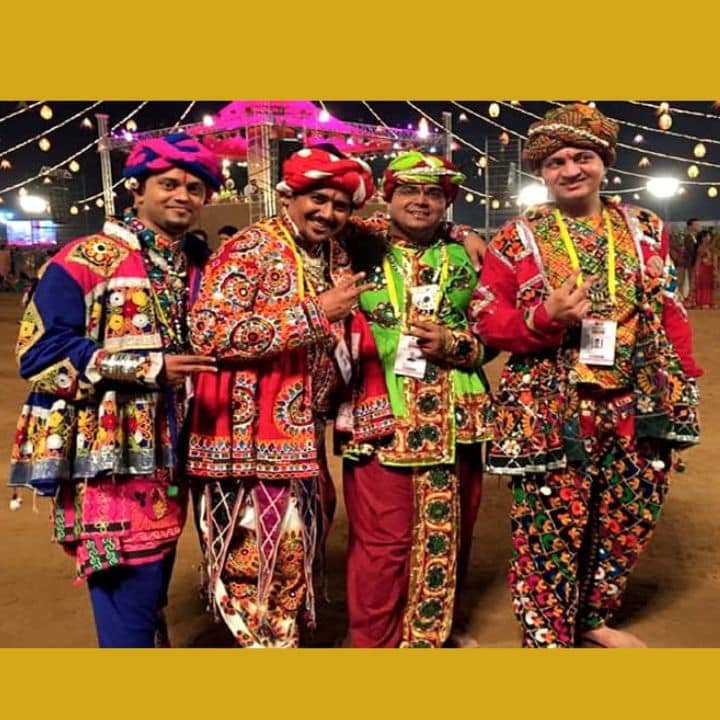
Kurta and Pajama
The kurta is a loose-fitting, knee-length shirt with a round or V-neck, often made of cotton, silk, or other fabrics depending on the occasion. It is paired with a pajama (a loose-fitting trouser) or churidar (tighter-fitting trousers), creating a simple yet elegant ensemble.
- Churidar Kurta: For formal occasions such as weddings and festivals, men often wear a churidar kurta, where the churidar provides a more refined and fitted look, complementing the kurta’s loose silhouette.
Bandhni (Tie-Dye) and Safa
The bandhni is a traditional tie-dye technique that is popular in Gujarat, especially in the Kutch region. Men wear bandhni fabrics in vibrant colors for special events, often paired with a safa, which is a traditional turban or headgear. The safa is an important part of the traditional dresses of Gujarat for men, symbolizing respect and honor during ceremonies like weddings and religious occasions.
Sherwani and Dhoti
For formal occasions, such as weddings, men in Gujarat often wear a sherwani, a long coat-like garment paired with a dhoti (a traditional cloth wrapped around the waist). Dhoti: The dhoti is a piece of cloth wrapped around the waist, which is a traditional garment worn in many parts of India.
Influences on the Traditional Dress of Gujarat
The traditional dresses of Gujarat has been influenced by various factors over the centuries, including religion, regional customs, and cultural exchanges with neighboring states and countries. Some of the key influences include:
- Mughal Influence: The Mughal Empire left a significant mark on Gujarat’s textile and fashion industries.
- Rajasthani Influence: The border region between Gujarat and Rajasthan has fostered cultural exchanges, and the traditional dresses of both states shares similarities in the use of colorful fabrics, mirror work, and the design of turbans.
- Tribal Influence: The tribal communities in Gujarat, such as the Rabari and Bhil, have their own unique clothing styles. For women, these include brightly colored skirts, intricate beadwork, and jewelry that reflect their tribal identity. Men often wear simple, yet functional, clothing such as tunics and turbans.
Table: Common Traditional Dress of Gujarat
| Outfit | Gender | Occasion | Key Features |
| Ghagra Choli (Lehenga Choli) | Women | Weddings, Festivals | Colorful, embroidered skirt and blouse, often paired with a dupatta |
| Patola Saree | Women | Weddings, Formal Events | Double ikat, handwoven, bright, and intricate patterns |
| Kurta and Pajama | Men | Daily Wear, Formal Events | Loose kurta paired with pajama or churidar, simple or embroidered designs |
| Sherwani and Dhoti | Men | Weddings, Ceremonies | Long coat with intricate embroidery, paired with traditional dhoti |
| Bandhni (Tie-Dye) and Safa | Men | Ceremonies, Weddings | Colorful tie-dye fabric paired with a turban (Safa) |
| Kediyu | Women | Daily Wear, Rural Areas | Loose, flowing tunic with puffed sleeves, comfortable for daily chores |
Final Thought Of Traditional Dress of Gujarat
The traditional dress of Gujarat is a vibrant and diverse reflection of the state’s rich cultural heritage. From the colorful ghagra choli worn by women to the elegant kurta pajama worn by men, Gujarat’s attire reflects the values, history, and artistic expressions of the region. Whether for daily wear or special occasions, the traditional dresses of Gujarat is a celebration of life, culture, and community, bringing people together through its beauty and vibrancy.
As Gujarat continues to evolve, the traditional dresses continues to be an important symbol of its heritage, embracing both its ancient roots and modern adaptations. Whether you are attending a festival or exploring the cultural richness of the state, the traditional attire of Gujarat offers a unique and meaningful glimpse into the state’s soul.
